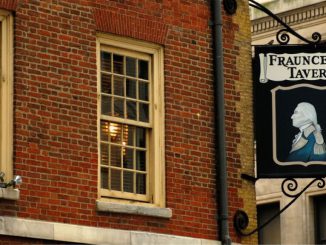
Plymouth Rock is the site of disembarkation of the Mayflower Pilgrims who founded Plymouth Colony in 1620. It is most likely that the Plymouth Pilgrims did not take their first step onto the rock simply because it would have been a wildly impractical landing spot. There is also the well documented fact that the Pilgrims first disembarked from the Mayflower at Provincetown more than a month before landing in Plymouth, and explored Cape Cod for a while.
While it is a site of important historical importance, Plymouth Rock is possibly one of the most overhyped roadside attractions in the United States. That being said… It is a place absolutely worth a visit simply to say you have been there, and you know, for the whole American history thing.
The first known written reference to the rock was in 1715 when it was described in the town boundary records as “a great rock.” The first documented claim that Plymouth Rock was the landing place of the Pilgrims was made by Elder Thomas Faunce in 1741. This little tidbit of history is interesting to note because 1741 is 121 years after the Pilgrims actually arrived in Plymouth.
A 40-pound (18 kg) piece of Plymouth Rock was removed and resides on a pedestal in the cloister of the historic Plymouth Church of the Pilgrims in Brooklyn Heights, New York. It is important to note that this little 40 pound piece of the rock was removed prior to 1880.
Plymouth Rock is managed by the Department of Conservation and Recreation for the Commonwealth of Massachusetts as part of Pilgrim Memorial State Park.
Plymouth Rock Facts
- Geologically Plymouth Rock is classified as a Dedham Granite boulder.
- In 1774, the rock broke in half during an attempt to haul it to Town Square in Plymouth.
- The broken portion of the rock was moved to the Pilgrim Hall Museum in 1834, and was returned to its original site in 1880.
- The granite canopy covering the top portion of the broken rock was designed by McKim, Mead & White.
- In 1851, a group of Cape Cod residents formed the Cape Cod Association for the purpose of promoting Provincetown as the site of the original Pilgrim landing.
- When the two pieces of broken rock were rejoined at the original wharf location in 1880, the date 1620 was carved into the side of the rock. This is effectively the oldest graffiti in the United States.
